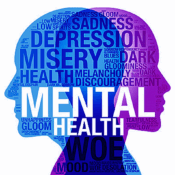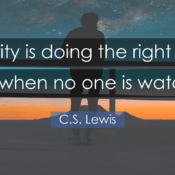
Raise the Bar: Bridging the Gap Between Communication and Impact
Every so often, I receive a message which gives me pause.
Recently, an interpreter reached out to 2axend: someone committed and clearly passionate about their profession. They shared that while they completed an interpreting training program (ITP) and currently work in a K-12 public school, they don’t feel qualified to interpret in medical, legal and corporate settings.
The lingering question remains: “How can an interpreter get to a level where the skill is inherent and they can interpret in varied environments and leave all stakeholders truly satisfied?”
This is a powerful question which reveals the complex nature of interpreting.
It deserves more than a personal response.
It deserves a system-wide reckoning.
The interpreting profession continues to rely on an outdated model where individual interpreters are often expected to bridge the gap between graduation and real-world competence alone.
Let’s use K-12 interpreting as an example.
K-12 interpreting is often perceived as not being “difficult” and not high-risk; consequently, a warm body approach may be perceived as being sufficient in these environments.
However, in K-12 settings, students heavily rely on interpreters for access to all aspects of their education, from academic content to social interactions.
Despite this, K-12 programs often hire newly-minted interpreters and expect them to be equipped with the specialized skills necessary to interpret for complex topics like algebra, physics, history, and literature. More often than not, these newly minted interpreters are far from prepared for such discourse. This leads to a direct impact on students’ learning - and can lead to academic issues, communication disconnect, and even social isolation.
Who is to blame? The ITPs that create a false sense of readiness for interpreting in K-12 settings? The K-12 programs that hire these newly minted interpreters?
Here’s the uncomfortable truth: The current system is failing interpreters and, subsequently, the Deaf and hard of hearing individuals they are supposed to serve.
Independent, self-paced professional development is not enough for sign language interpreters to succeed after graduation.
Step one, complete your ITP studies. Next, get your credentials. And then… off you go! You now hold communication between others in the palm of your hand (literally!)
Point blank: this approach doesn’t meet the needs of interpreters striving for a positive experience… Let alone the systemic experience from the Deaf and hard of hearing community’s perspective.
Interpreting isn’t just about fluency. It’s about nuance, context, and consequence. It is about navigating complex dynamics, facilitating access to justice, healthcare, education, and employment… often under pressure, in real time.
We cannot continue to treat interpreter development as a side project. For an effective experience, we must drive systemic change:
- Structured residency programs to support new interpreters as they move from theory to practice.
- Ongoing assessments which ensure interpreters stay sharp, ethical, and relevant across the varied settings they serve.
- A shared standard of interpreting which prioritizes continued growth, not solely qualification.
This is bigger than any one interpreter. It’s a call for collective responsibility and systemic change. I implore you to consider how you can take action and elevate the interpreting experiences for Deaf, DeafBlind and hard of hearing individuals.
To hit the ground running, I outlined a few examples below to inspire ways you can take action today:
To interpreters:
Stop waiting for permission to seek structured growth. Advocate for mentorship. Ask the organizations you work with: What systems are in place to help me develop beyond certification? You deserve more than a sink-or-swim model.
To corporations, conference hosts, private-sector employers and government institutions:
Interpreting is not a check-the-box line item. Demand excellence and invest in it. Vet the agencies and interpreters you work with. Ask how interpreters are selected, trained, and evaluated over time. Require more than just certification.
To academic institutions, healthcare systems, and legal entities:
If your interpreters aren’t equipped for your environment, access breaks down. Push for partnerships that create pipelines of interpreters trained specifically for your high-stakes contexts. Fund residency-style programs. Ask for systems of continuous interpreter assessment. When the stakes are high, “qualified” isn’t enough.
Interpreting is a craft. A practice. A lifelong discipline which should be supported with continuous learning.
Imagine a future where skilled interpreters enter the field with structured mentorship, ongoing guidance, and meaningful benchmarks… Not just hope and hustle. That’s how we build trust. That’s how we end #TheDDBHHTax. Continuous learning is how we effectively raise the standard of interpreting encounters and ensure positive outcomes for all involved.
The question isn’t whether we can drive systemic change for the better - it’s when we will. Let’s stop leaving communication up to chance and get started today.
What are you going to do to raise the bar?



